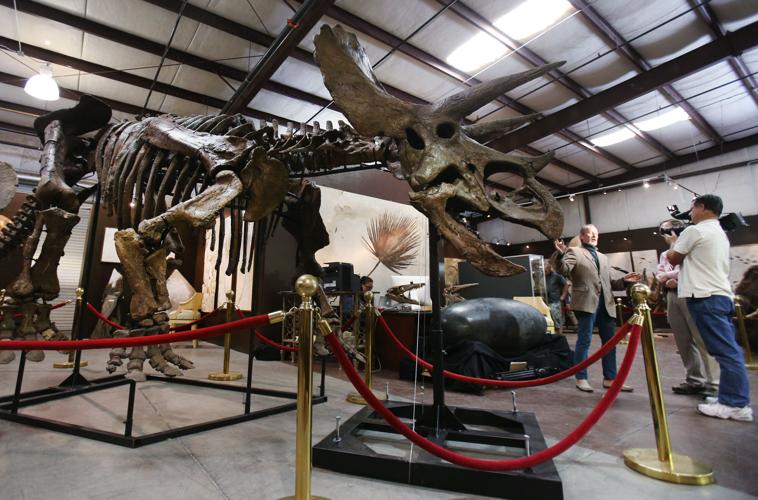Bob used to lumber across the plains of North Dakota, munching on shrubs and warding off predators with his 3-foot-long horns and 7-foot-long protective bone plate.
Nobody knows how Bob the Triceratops died, but more than 65 million years later his skeleton stands at a Tucson Gem, Mineral & Fossil Showcase showroom on North Oracle Road.
As one of the largest Triceratops skeletons ever assembled out of original bones, Bob is worth more than $1 million, said Thomas Lindgren, president of GeoDecor.
“It’s one animal, which is really quite unique,” Lindgren said.
While most fossilized skeletons have less than 50 percent of their original bones, 21 of Bob’s 24 major bones were with him when he died in the late Cretaceous Period, he said.
Lindgren is selling the skeleton at the Mineral and Fossil Co-op on behalf of private owners in North Dakota, where the skeleton was on display at the Barnes County Historical Society until December.
In the world of fossil-buying, the Triceratops is one of the most popular species, mainly because of its familiarity, Lindgren said.
“It’s one of the dinosaurs we’ve all grown up with,” he said.
The roughly five-ton herbivores measured about 25 feet long and roamed the plains of Wyoming and the Dakotas in herds, much the same way as bison did centuries ago, said Stefano Piccini, an Italian paleontologist who ran the nearby Geoworld showroom.
Bob was dug up on private land in 2003 in the Hell Creek Formation, which stretches across the Dakotas and part of Montana, Lindgren said.
The owners of the land where Bob was found spent 11 years digging him up and mounting him on a steel frame, the Grand Forks Herald reported. He was put on display at the Barnes County museum in June 2014.
When Bob was alive, the Tyrannosaurus Rex was the main predator of Triceratops, as evidenced by the bite marks on many of their skeletal fossils, Piccini said.
The horns and “frill” boneplate protecting the Triceratops neck likely developed to protect their necks from the Tyrannosaurs Rex’s attacks, he said.
Although Triceratops lived in the northern plains states, their habitat did not extend to Arizona, Piccini said.





